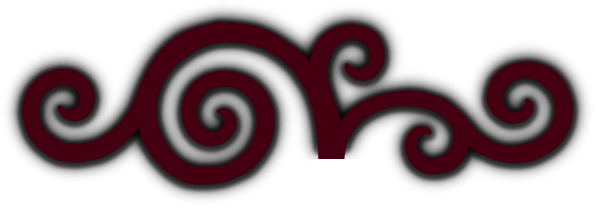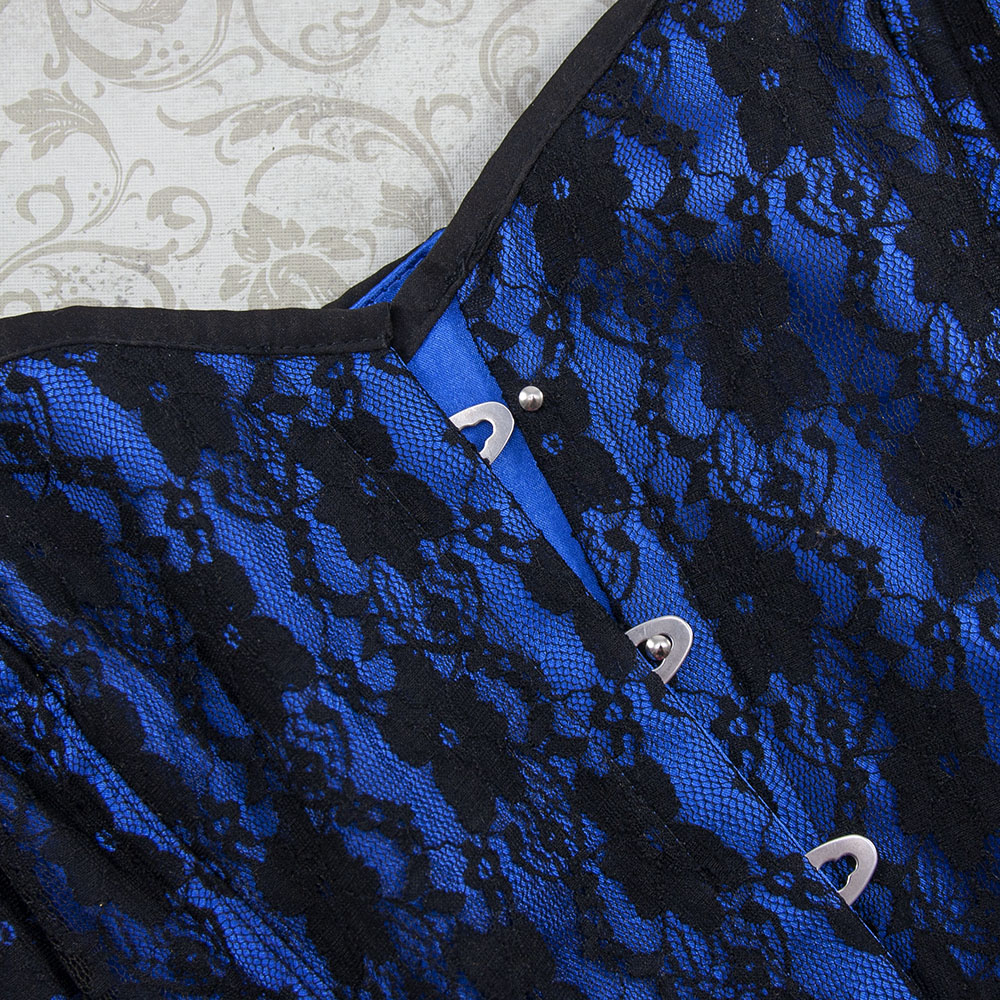I was surprised when I started working on this post – and came up with 18 different terms to explain to you! Corsets are a rather complex art – so to explain them well, it helps to dissect them into their parts – and define each one. In this part, we’ll cover everything that goes into making a corset, as well all the terminology you need to become a corset afficionado.
We’ll start with the boning. In most corsets, there is one steel bone along each seam, plus four in the back with the grommets. The jury is still out on this – but in my opinion, the nicest corsets have spiral steel bones over the bust and all around the sides. Sometimes you see them with flat steel – and some people prefer flat steel (saying it gives more support). Spiral steel bones are extremely flexible (while still being strong as steel) and they mold to your form without digging in. For me at least, the sensation of straight steel bones digging into my rib cage is extremely uncomfortable! So I use spiral steel for my corsets. The bones in the back beside the grommets, however, should be made from flat steel. They will keep the edges of your corset straight as you lace up into it.
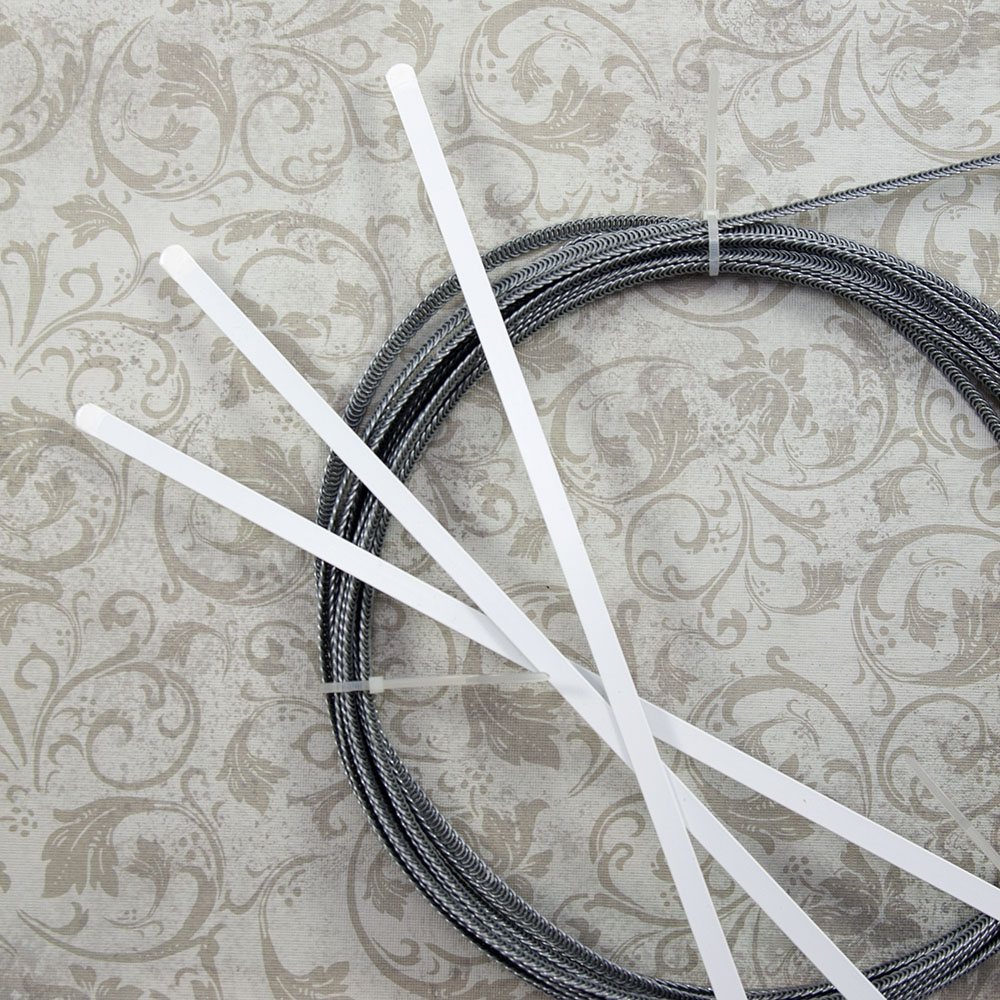
The diagram at left shows how the bones are placed in most corsets. This is called a “Single Steel Boned Corset”. But some corsets are double steel boned – meaning they have two spiral steel bones along each seam in place of one. To my knowledge, all double steel boned corsets are made with spiral steel. With two bones along each seam, you need that moldability! Waist training corsets are usually double steel boned, since they are extremely durable when made that way.
In the front of most corsets, you have a busk, with hooks all the way down. In some corsets, you instead have swing latches (or box clasps). You see swing clasp closures very often in Steampunk corsets.
Corsets are made of two fabrics fused together. The outer fabric is called the “Fashion Fabric” and the inner fabric is called the “Strength Layer”. The fashion fabric will usually be something pretty – and the strength layer will be a nice thick coutil or cotton twill. There are boning channels sewn to the back of the corset, and the boning is inserted inside.

Some corsets have reverse boning channels, which are made from a contrasting fabric and sewn to the outside instead of the inside. This makes a really cool decorative effect.

Some corsets have waist tapes. The waist tape reinforces the waist and keeps it from stretching. I chose to leave the waist tape out of my hourglass corsets, because I find that the corset has a smoother shape without it. I make these really pretty dress jackets, patterned to curve perfectly with the shape of my hourglass corsets. The smooth shape in the waist looks nicer with my jackets, so that’s what I did! But if you have bought a high quality corset elsewhere, you will likely see a waist tape on the inside.
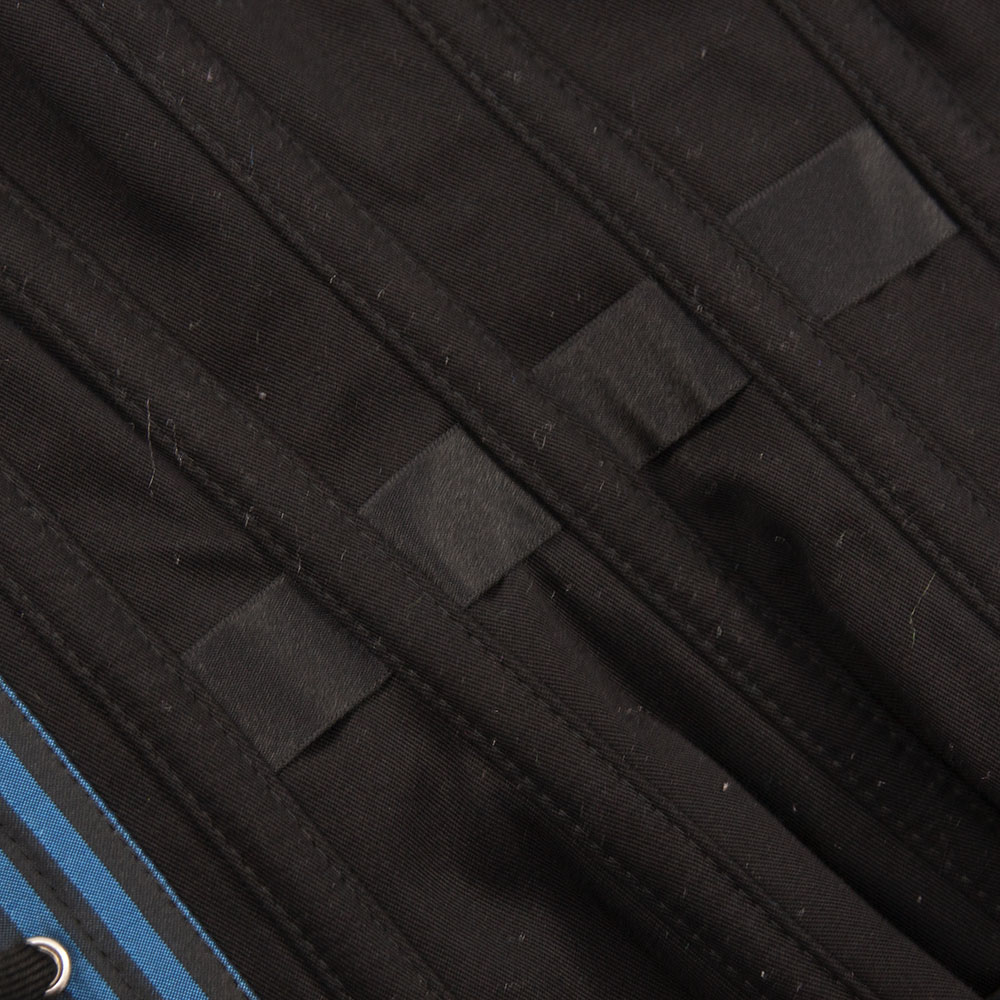
In the back, between the two flat steel bones, are grommets. (photos coming soon! Lol, I forgot to mention the grommets when I originally wrote this post, so I’m now adding them in way after the fact.) What are grommets? They are the metal pieces that protect the lacing holes from getting wallered out over time. You may think of them as “eyelets” – but eyelets are one piece. The front looks the same as a grommet, but in the back, eyelets have what looks like metal flower petals that spread out around the lacing hole. If you’ve bought a corset from a new maker, you might find eyelets instead of grommets. Grommets are two part. There is a front piece that curves around the back piece, and if set properly, both the back and the front is 100% smooth. The flower petal-ed back of an eyelet will cause lacing to fray over time, so for a long lasting corset, grommets are necessary.
In back under the lacing, your corset should have a modesty panel. This protects your back while lacing up, and covers up the crease you’ll have in your back after laced into the corset.
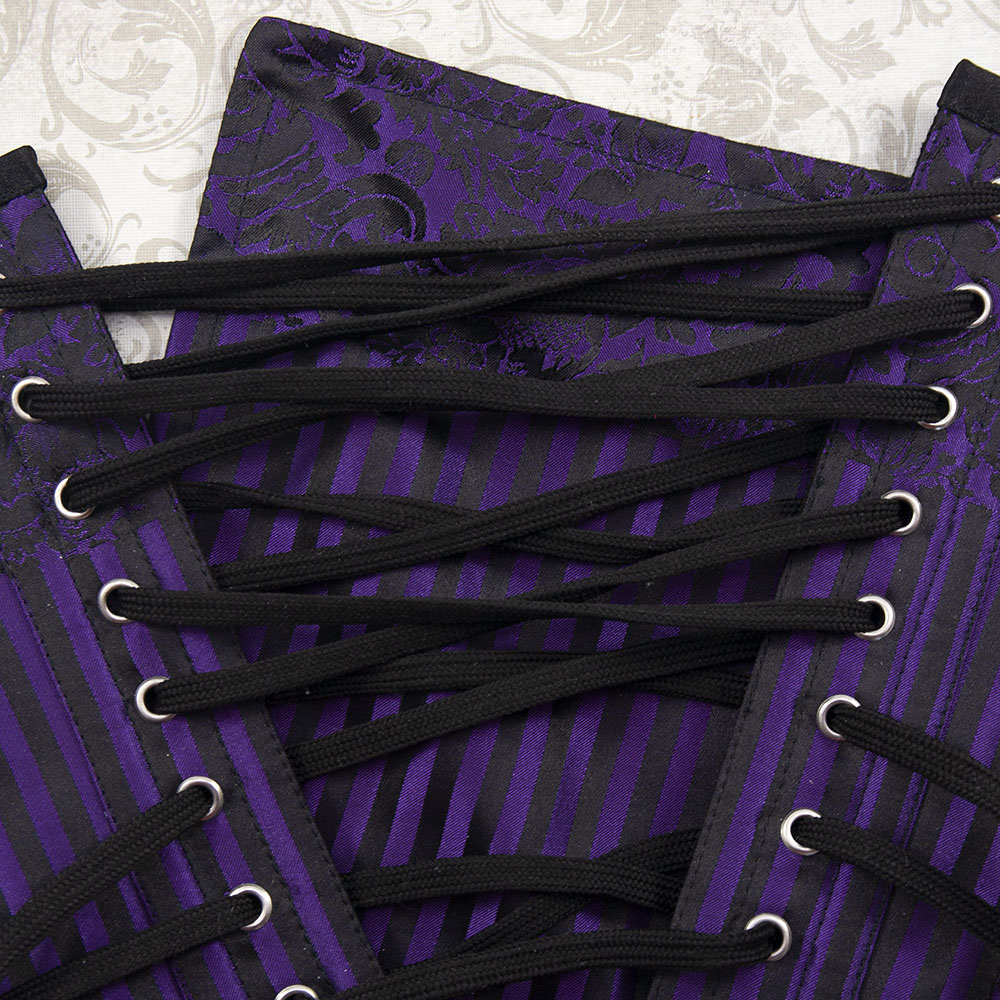
More rarely, corsets will also have a modesty placket in front, to protect your stomach while hooking the busk, and cover the tiny space that can happen in front. My hourglass corsets have this piece. I accidentally hooked stomach skin into a busk on a corset once. (Holy friggin ouch!) Let me tell you, that experience will make you insist upon always having a modesty placket in the future!
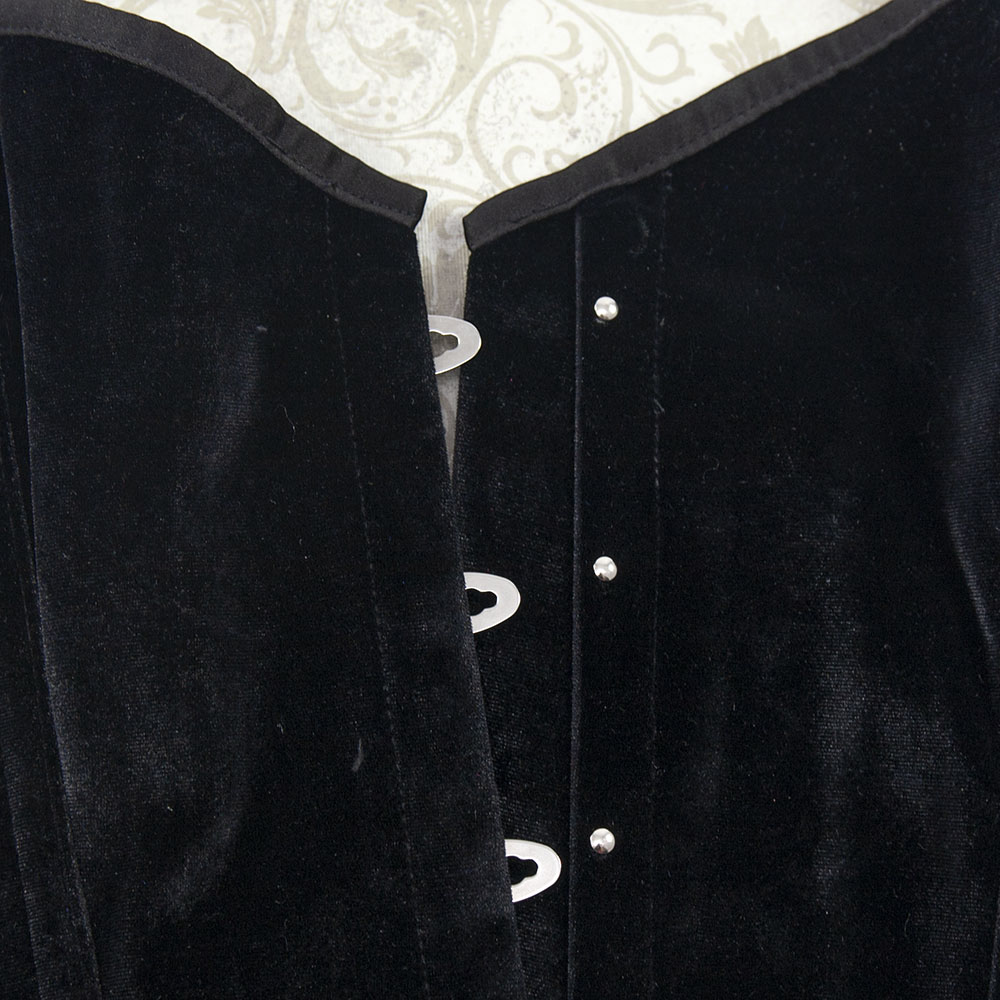
The trim at top and bottom of the corset is called binding. It’s often made from the fashion fabric, or sometimes it’s made of contrasting fabric for a cool look.
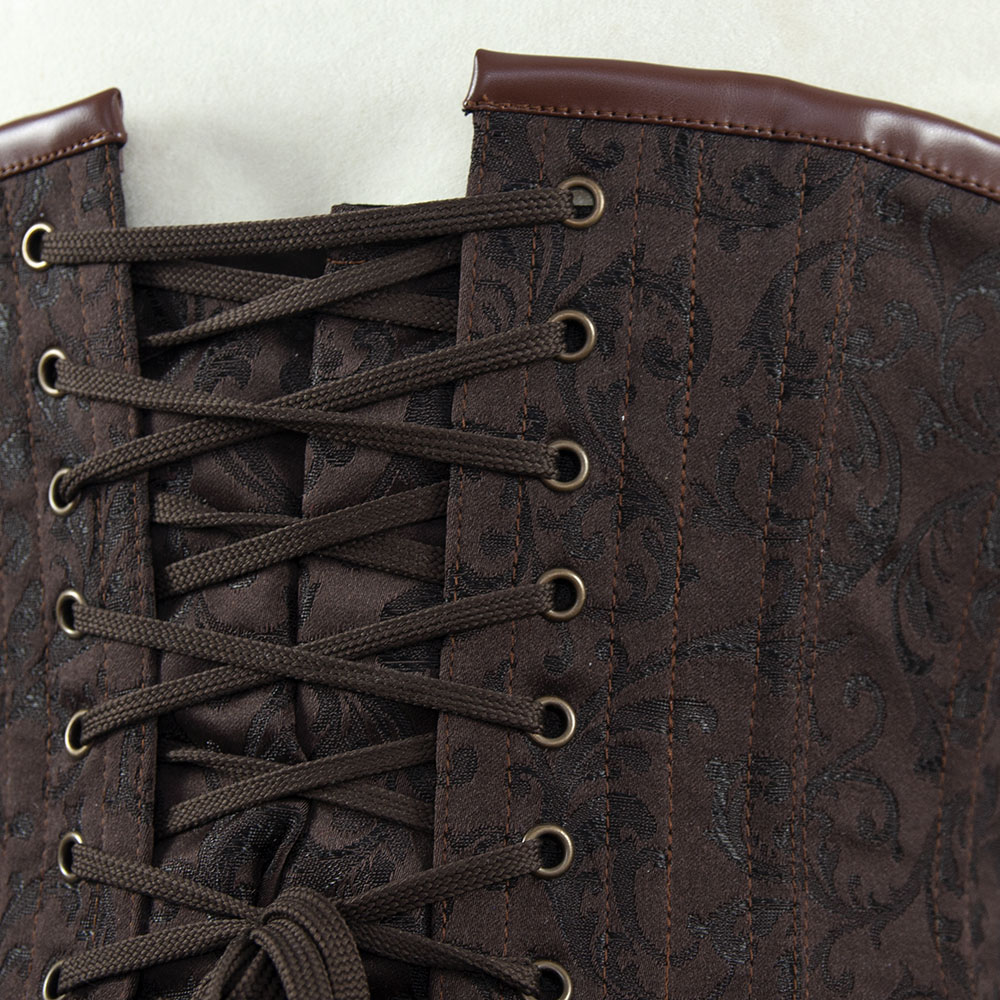
The lacing in back is extra long, so you can loosen the corset to a very wide gap in back to put it on. It’s laced so that there are bunny ears on either side at the waist – so they are easy to pull to tighten the corset.

That’s all the parts to a corset. Was it a bit more complex than you thought it would be? Coming next week, Corsets 101 part 5 – Pattern Matters

